Flags of the world come in all colors and designs. One flag type is the quartered flag: one that is divided into four equal blocks of color. The last flag on our list is the one that comes closest to being a flag with four simple blocks. For our list, we’ve taken some liberties. For example, we’ve included flags with dividing stripes and other design elements. However, they still have four identifiable blank or nearly blank sub-fields. We’ll tell you all about the countries with quartered flags, including the flag’s symbolism and the history and culture of the people who call it their own.
Burundi
Burundi is a landlocked East African country wedged between Tanzania, Rwanda, and the Democratic Republic of the Congo. It was colonized in the 19th century by Germany and then by Belgium before winning independence in 1962. Like its neighbor Rwanda, Burundi has been troubled by violent conflict between the Tutsi and Hutu ethnicities. In fact, conflicts spilled over into civil war from 1993 to 2006.
Flags such as Burundi’s with a diagonal cross are called “saltires.” The white color symbolizes peace. The three stars in the center are the country’s three ethnic groups: the Hutu, Tutsi, and Twa. Additionally, the four approximate quarters of the background field are red and green. Red memorializes the sacrifices and loss of life in the country, and green symbolizes hope for future progress. Thus, Burundi’s flag invites its people to remember the past, have hope for the future, and move forward in peace.
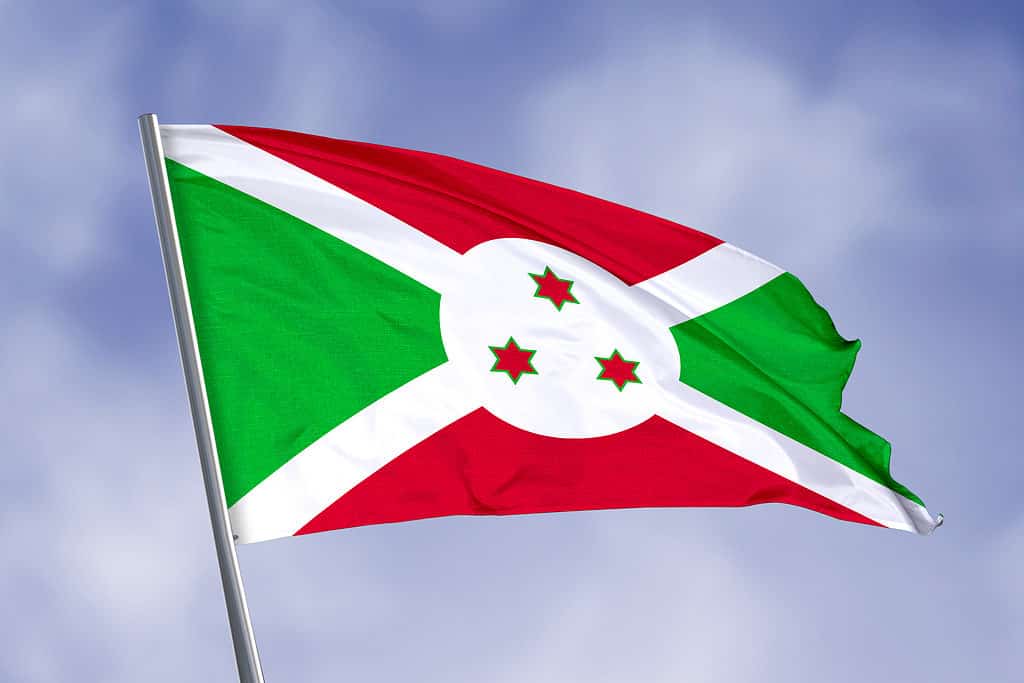
Burundi’s flag is divided diagonally into red and green quarters.
©Tatohra/Shutterstock.com
Dominica
Dominica is a tropical Caribbean Island nation. Like many of its neighbors, it is a popular tourist destination attracting visitors from around the world. It was a British colony but attained independence in 1978. Dominica chose to emphasize green as the dominant color, representing the island’s abundant tropical vegetation. Yellow, black, and white stripes arranged in a cross pattern separate these fields. Those colors represent the sun, the African heritage of the Dominican people, and the island’s purity of heart. In the center is a depiction of the sisserou parrot, a critically endangered species found only in Dominica. As you can see on the flag, the sisserou parrot’s feathers are hues of green and purple. Dominica is one of the very few nations in the world to use purple in its flag.
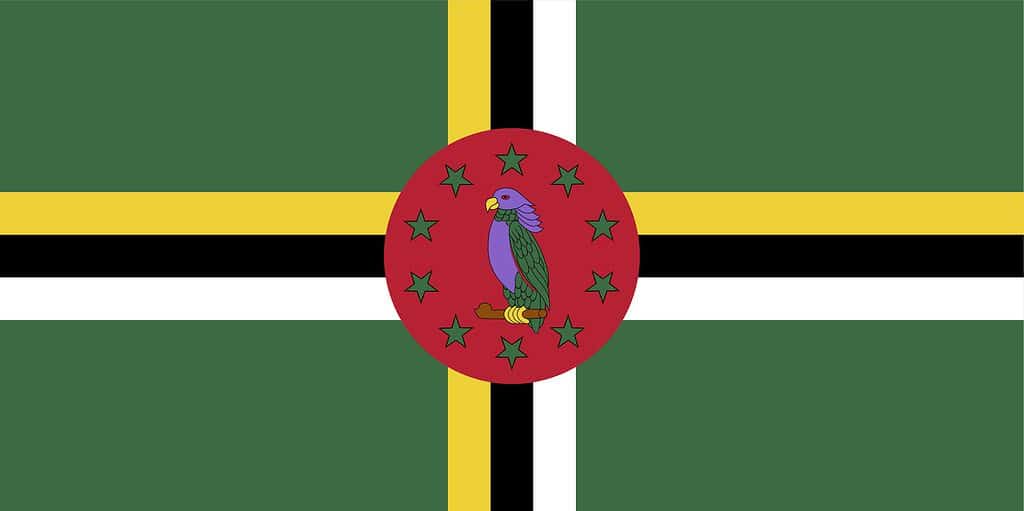
The flag of Dominica is divided into four green quarters. It features the national bird, the sisserou parrot, found only on this island.
©mapsandphotos/Shutterstock.com
Dominican Republic
The Dominican Republic is one of two countries on the island of Hispaniola in the Caribbean Sea. The other is Haiti. Christopher Columbus visited the island in 1492 during his first visit to the Americas. Tragically, the colonizers subsequently enslaved the indigenous Taíno people. Disease and violent abuse decimated them. After hundreds of years, in 1821 the Dominican Republic achieved independence from Spain.
The flag of the Dominican Republic divides into four quarters, separated by a white cross. The national coat of arms is in the center. The cross symbolizes the country’s Christian heritage and unity between the Spanish and Taíno peoples. The blue quarters represent liberty, and the red quarters represent the blood shed for the country’s freedom.

Blue and red quarters form the background of the flag of the Dominican Republic
©N. Vector Design/Shutterstock.com
Georgia
Georgia is a country on the Black Sea in the Caucasus region of Eurasia. It borders Russia to the north and Azerbaijan, Armenia, and Turkey to the south. In Greek mythology, Georgia was the origin of the magical Golden Fleece. It also appears in Christian tradition. The apostles Simon and Andrew allegedly visited it in the first century. Georgia was a thriving kingdom in the Middle Ages, but constantly fought off the predations of more powerful neighbors. These included the Mongols and Persians. Imperial Russia took control of Georgia in the 18th century. It remained under Russian control until the dissolution of the Soviet Union in 1991.
Georgia’s flag features a red cross separating four identical white fields, each with its own red cross at its center. White represents purity. Red stands for blood, both the blood of Christ and the blood of the martyrs who died for Georgian freedom.
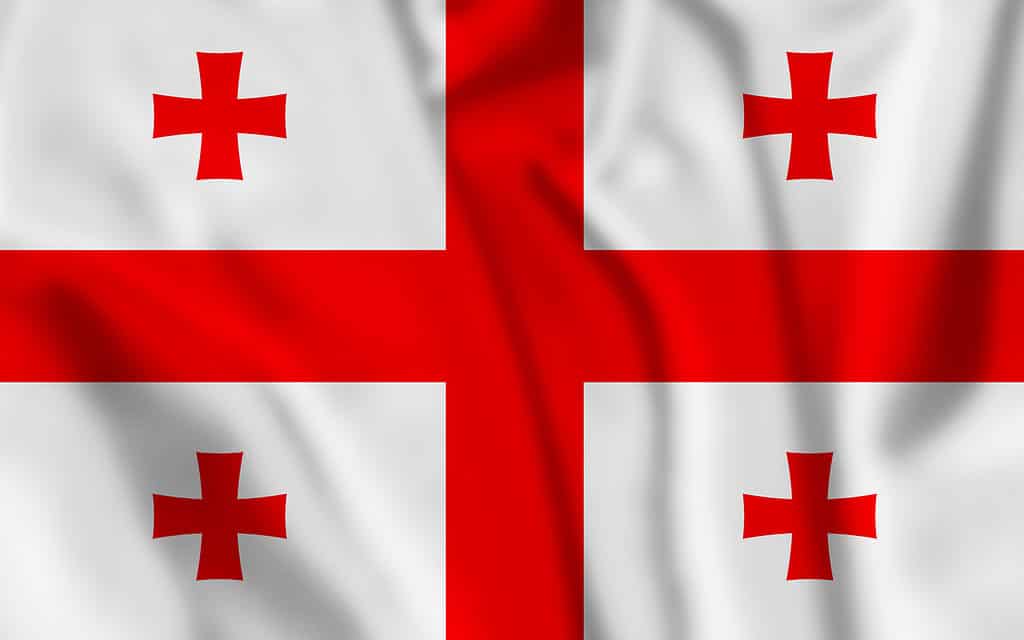
The Georgian flag includes four quarters of identical red crosses on a white background, separated by a large cross traversing the flag.
©iStock.com/Alexandra Bykova
Grenada
Grenada is a Caribbean Island nation that was a colony of Great Britain until gaining independence in 1974. As one of the countries with quartered flags, its national standard is divided into triangular quarters. In this case, the colors are yellow and green. The yellow hue recalls the bright Caribbean sun and the friendliness of the people of Grenada. Green represents the country’s agriculture, including its chief export – nutmeg. This spice is depicted in the hoist side green triangle. A yellow star in a red disc occupies the center. The whole flag has a red border with three yellow stars at the top and three at the bottom. Red is symbolic of harmony, unity, and courage, and the seven stars stand for the seven parishes of the island.

The flag of Grenada is divided into four triangular quarters of yellow and green and surrounded by a red border.
©MATULEE/Shutterstock.com
Jamaica
Like most of the countries we’ve looked at so far, Jamaica is an island nation in the Caribbean Sea. After centuries of British rule, it became independent in 1962. The saltire (diagonal cross) design of the flag comes from the British Union Jack. However, the colors are distinctively Jamaican. Yellow represents the sun in a place that is almost always sunny. Green is a salute to the beautiful land of Jamaica, while black honors the African Caribbean people building their nation.
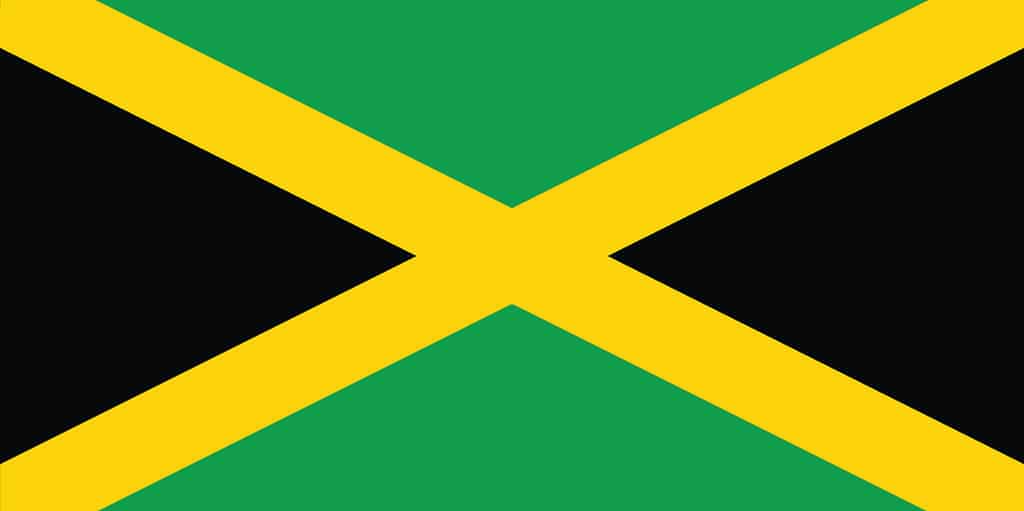
Jamaica, a former British colony, modeled its flag design after that of the United Kingdom.
©iStock.com/kckate16
Panama
Located in Central America, Panama is a crossroads connecting North and South America and the Atlantic and Pacific Oceans. Indigenous people groups lived there for thousands of years before the arrival of Spanish colonizers in the 16th century, led by the conquistador Vasco Núñez de Balboa. For centuries the natural resources of the region, including gold, helped Spain finance its empire. Panama attained independence in 1819 as part of Colombia but separated from that country in 1903 with the help of the United States, which wanted favorable terms for building a canal across the country. Opened in 1914, the Panama Canal greatly reduced the cost of shipping between the Atlantic and Pacific Oceans. Usage fees for the canal remain a major income source for Panama today.
Of all the countries with quartered flags, Panama’s perhaps comes closest to being what we would consider a true quartered flag. It divides into four simple quadrants of red, white, and blue without any borders or dividing lines. The two white quadrants each have a five-pointed star, one of red and one of blue. The colors mimic those of the United States. However, they have different symbolic meaning in Panama. White represents peace; blue represents the conservative party; and red represents the liberal party. Thus, the flag as a whole embodies the hope that people from opposite sides of the political spectrum will still be able to live together in peace in a free and prosperous country.
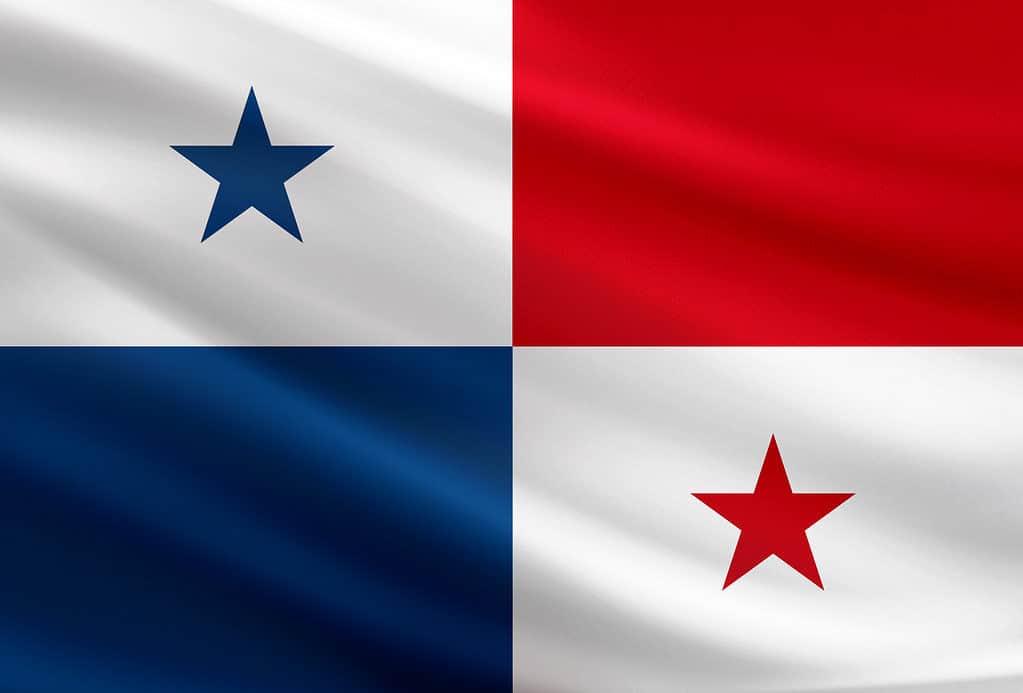
The Panama flag features red, white, and blue quarters along with two stars in red and blue.
©Osman Bugra Nuvasil/Shutterstock.com
The photo featured at the top of this post is © em_concepts/Shutterstock.com
Thank you for reading! Have some feedback for us? Contact the AZ Animals editorial team.







